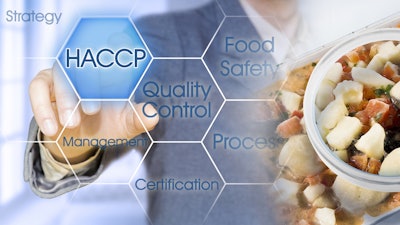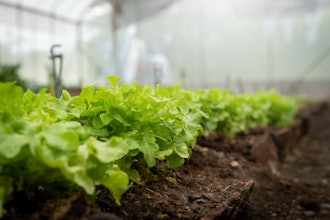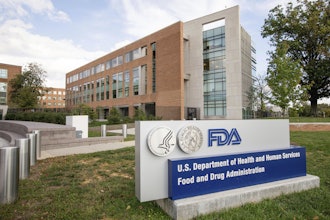
In an unexpected turn of events, the incidents of foodborne infections have been on the decline over the past few years. According to the CDC’s Foodborne Diseases Active Surveillance Network (FoodNet), there were 26 percent fewer foodborne infections in 2020 compared to the 2017 through 2019 period.
The decline, however, could simply be one more side effect of COVID-19, when less inspections were taking place earlier in the pandemic. In fact, in March 2021, the FDA announced it was suspending most foreign inspections of food and safety products. Another reason could be the fact that there were less medical visits by patients experiencing the side effects of foodborne illness; or the fact that supply chain disruption prevented many food items from reaching consumers in the first place.
The decline in reported numbers of foodborne infection can be misleading, enabling companies and consumers to let their guard down. Yet, any amount of foodborne infection is cause for concern, not only for the safety of consumers, but also for the health of enterprises manufacturing food and beverage products.
So how can manufacturers take action into their own hands to prevent quality issues at the source? Consider the following seven best practices:
Stay up-to-date on FSMA. The Food Safety Modernization Act (FSMA), which was established in 2011, really only took full effect in the last few years. While it was created to tighten safeguards for food production, its guidelines are in constant flux. It’s important for companies to stay abreast of preventative control requirements and consistently revisit their Hazard Analysis and Risk-Based Preventative Control (HARPC) measures, as well as Hazard Analysis Control Points (HACCP). They should diligently document their key control measures to ensure that any monitoring, verification, corrective actions and other record keeping are being completed effectively.
Monitor the supply chain. In addition to meeting strict preventative controls, manufacturers need to ensure the safety and quality of food products even before they reach their premises. Food and beverage manufacturers need to regularly audit and collaborate with their sourcing partners across the supply chain. They should design and validate control measures and processes and standards that are enforced and ensure that FSMA guidelines are consistent regardless of where the supplier is located.
Consider IIoT/Industry 4.0 direction. The industrial Internet of Things is enabling greater visibility, control and risk management across the enterprise, as well as the supply chain. It can provide real-time monitoring of suppliers, pest control, sanitization, temperature control and other elements that can impact food quality. Some examples include instrumented bait stations that can alert facilities managers to pest activity, or smart ID badges that record when employees comply with hand-washing policies.
Establish a quality culture. Proactive quality must begin with the company’s leadership and be carried throughout the organization. This means that the company commits visible resources to quality and safety, and that employees are fully on-board with and take ownership of safety and quality values. Further, quality professionals must be seen and valued as drivers supporting strategic business goals, as opposed to rule enforcers across the organization.
Automate Food Safety Management Systems. Automated systems for document control, audit management, Corrective and Preventative Action (CAPA) plans, nonconformance management and supply chain management, for example, can proactively thwart potential quality issues, track incidents as they occur, as well as help to efficiently resolve any issues that do occur. For example, they not only could flag potential end-of-shelf-life issues with distributed food or beverages, but also provide a degree of traceability in the event an issue occurs.
Develop a risk matrix. The components of risk usually manifest themselves in two forms- hazards or harms. Hazards represent the potential source of a harmful event (e.g. foodborne parasites). Harms are the resulting damages to products, persons, or the environment (the effect). Risk is essentially cause and effect on a defined scale. Risk assessments and risk matrices can help guide decision-making in an organization. Yet, it’s not enough to just have a risk matrix or another compliance-related process. You need a team in place to analyze the risk and leverage the data to perform root cause analyses and make data-driven decisions.
Learn from your data. Quality data, customer data, nonconformance, CAPA data, and supplier data all have the ability to help you manage the risk of biological, chemical, and physical hazards in the manufacturing as well as delivery process. Yet, the amount of data gathered in organizations can be overwhelming. Analytical tools can help to find trends and areas of concern in the data to prevent future issues and learn from the past.
Taking a Cue From A Vertical Farmer
As an example of the power of automation in removing foodborne risk, consider the example of a leading agritech firm. While vertical farming is a healthy sustainable way of producing food, one leading provider understood the inherent risk in supplying produce to major grocery chains around the country. Despite the fact that vertical farming is safer because of the elimination of contaminants and pests from the outside world, the company was still challenged with extensive audits from food safety organizations and wholesale customers, as well as the need to more efficiently audit its own suppliers.
The company automated management of corrective actions, document controls, and its supply chain to improve efficiency and make data for audits more transparent. By automating core processes it was able to streamline the way it responds to — and passes — audits. For example, as part of its Safe Quality Food (SQF) certification, it must pass a surprise audit that can take place at any time. No matter when the audit occurs, it can click a single button and deliver a report to the auditor without having to go through each individual finding. As time goes on and the company continues accumulating data, each relevant document will automatically update the linked audit findings.
Automating core processes enabled the agritech firm to eliminate the need to prepare individual findings by hand, which means that audits themselves go much faster and the firm can focus on food safety, crop yields and consistency that can reduce any issues with food quality that could lead to foodborne illness.
Summary
As evidenced by the agritech firm, taking steps to manage compliance requirements and keep food safety front and center is crucial. Despite a reduction in reported cases, the Centers for Disease Control and Prevention (CDC) estimates that there are about 48 million cases of foodborne illness every year, most caused from consuming bacteria or virus. While consumers must do their part to reduce their own risk, through safer sanitation and refrigeration practices, safety must begin  David Isaacson
David Isaacson
David Isaacson is the Vice President of Product Marketing at ETQ. Isaacson focusses on developing market strategies and product positioning for cloud-based solutions.























